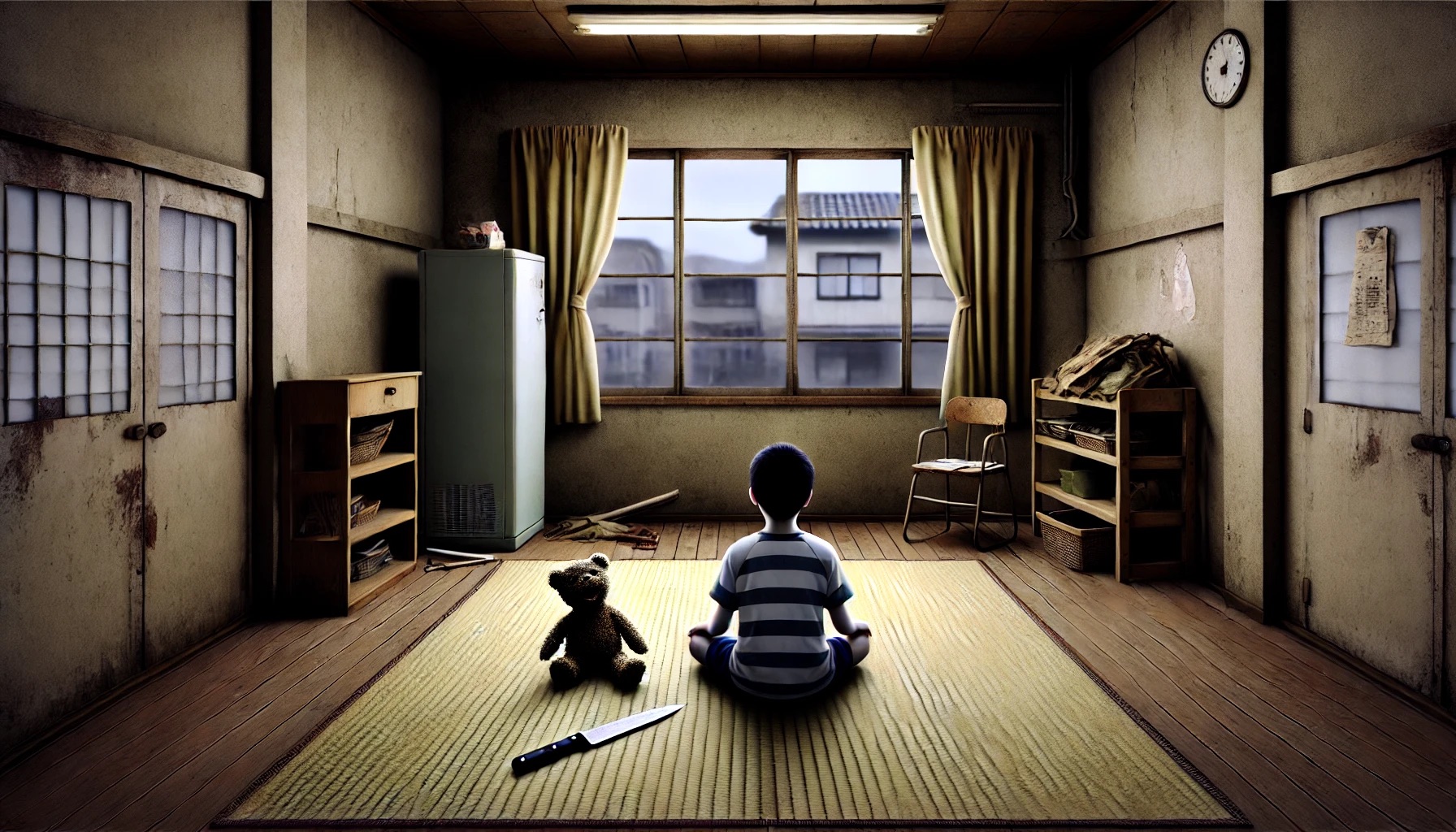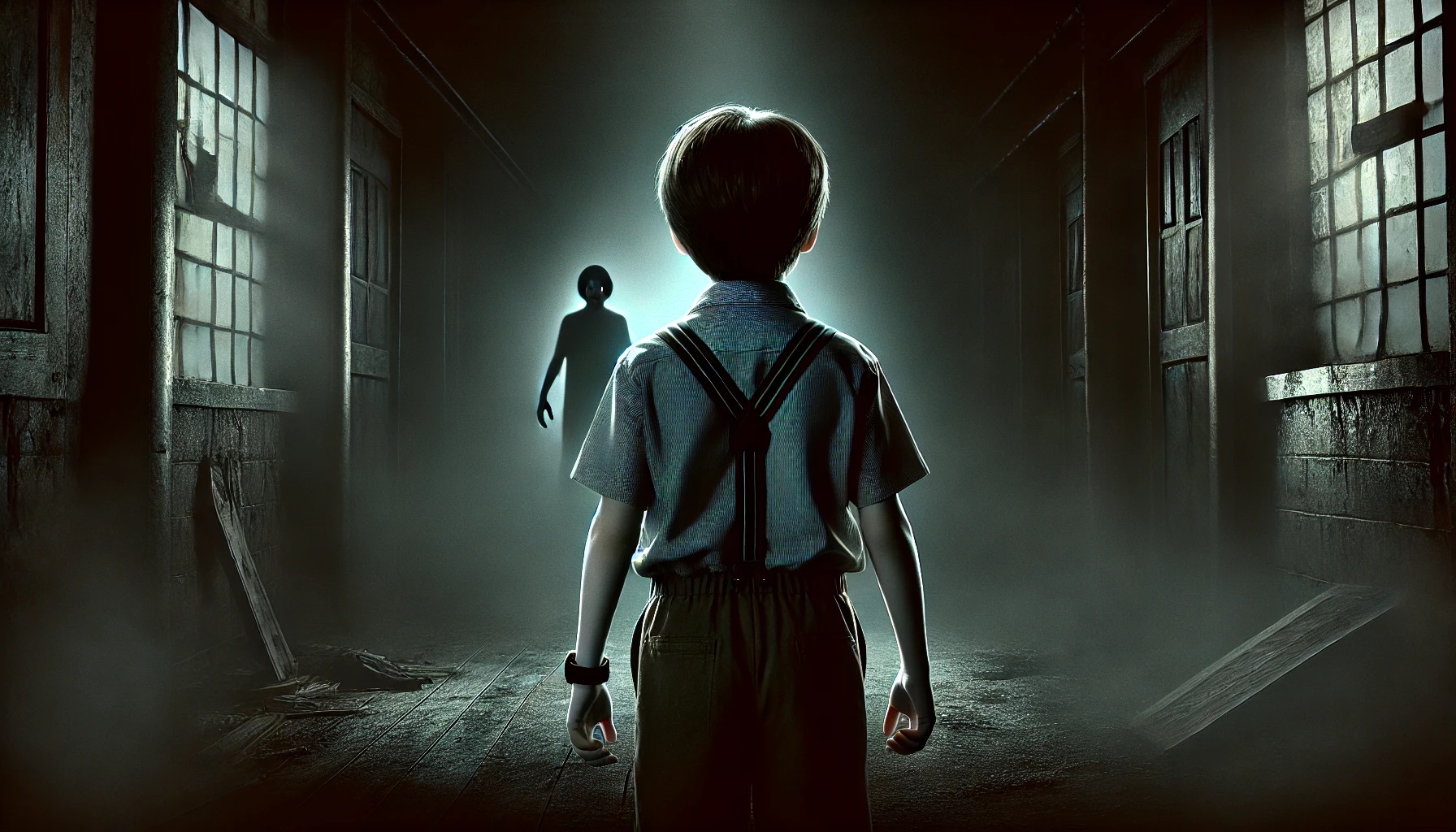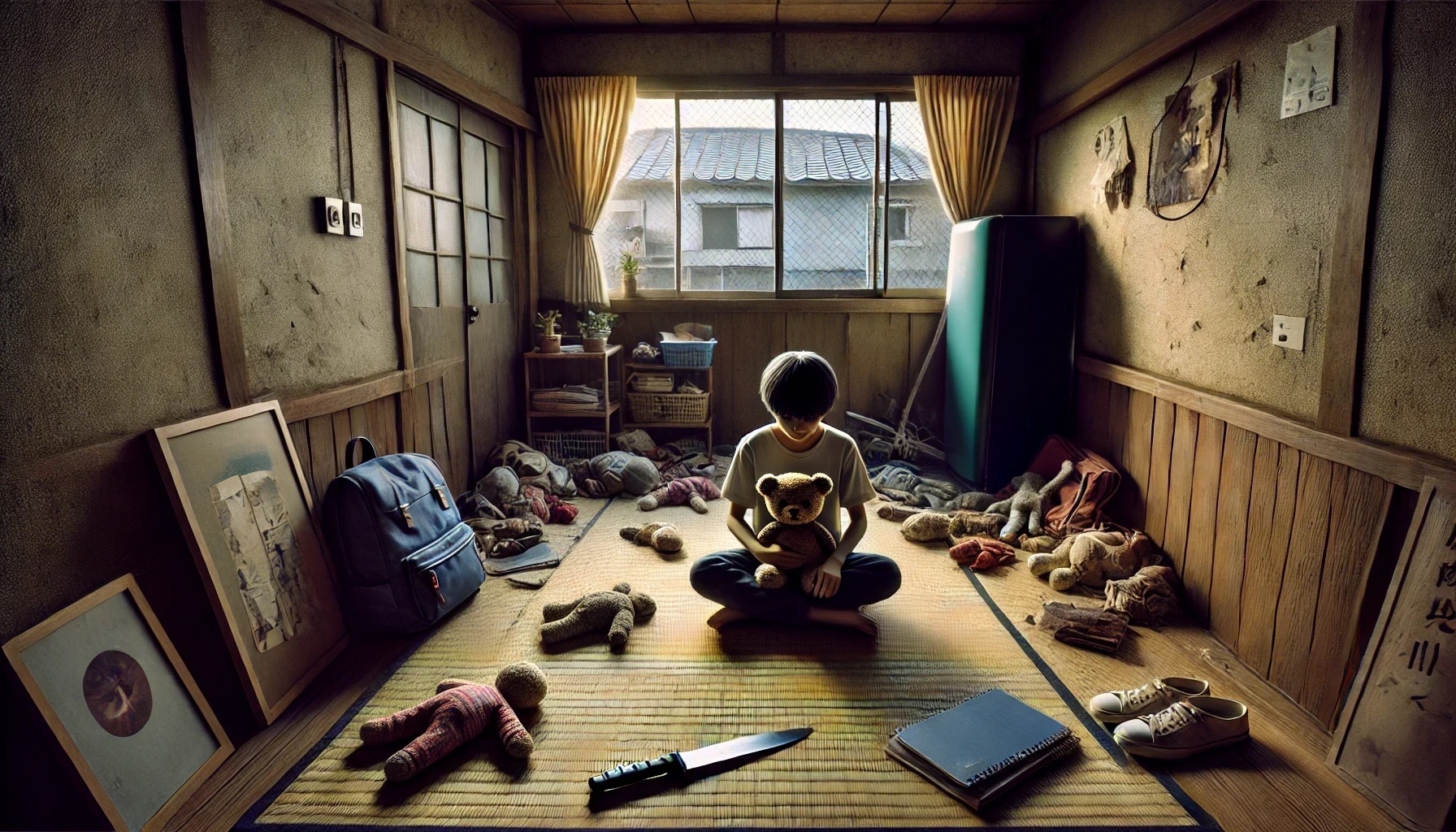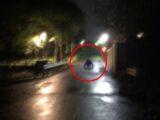He Died The Way He Played: A True Japanese Horror Story of a Lonely Boy and a Ghost
He Died The Way He Played: A True Japanese Horror Story of a Lonely Boy and a Ghost

In November 2001, in a certain part of Gunma Prefecture, a brawl erupted between two rival bōsōzoku—Japanese youth biker gangs. The fight ended when one boy was stabbed to death with a knife.
The victim and the perpetrator belonged to opposing crews. The police, and subsequently the media, reported the incident as a straightforward case of a turf war gone wrong.
At the trial the following year, the defendant’s lawyer argued it was a crime of passion, not premeditation. He claimed the victim had provoked his client, calling him a coward. The stabbing, the lawyer insisted, was an impulsive act, a tragic accident that unfortunately resulted in death.
Looking back at the old newspaper and magazine articles, the sheer brutality of the attack makes the “accident” defense hard to swallow. The killer first lunged with the knife. After the victim collapsed, he straddled his fallen body and plunged the blade into his chest again, and again, and again. The boy bled out, losing over two liters of blood before he died.
And yet, in a way, the defense lawyer had a point. It was difficult to find any evidence of a premeditated plan.
The murder occurred in the middle of a chaotic melee involving some fifty boys. Nearly all fifty were at the scene, and many of them were armed with weapons like knives. In such a volatile situation, it’s unlikely the defendant had specifically armed himself with the intent to kill that one particular victim. He probably just brought a weapon because his friends did. And many people, on both sides, had heard the victim’s taunts. Anyone could have been the killer that night. In fact, it feels like a miracle that only one person died.
The obsessive stabbing of the fallen boy? One could easily explain it away as a fit of rage. “He’s a delinquent in a biker gang,” you might think. “Of course, he’s capable of that.”
But that’s a prejudice, a lazy assumption made by those of us who live “normal” lives. I was forced to confront this very bias within myself after a woman came forward with a story about the victim. After interviewing her, I was left humbled and horrified.
Her name is Rika Hatayama. When the news first broke in 2001, she felt a chill knowing the murder happened so close to home, but otherwise, she didn’t give it much thought. At the time, Rika was a 20-year-old university student living a quiet life with her family, a world away from biker gangs. Her neighborhood was a safe, educated district of single-family homes. The crime scene, a corner of a large commercial complex, was a place locals often frequented. It was only about three miles away—a ten-minute drive.
Gunma Prefecture has the highest rate of car ownership in Japan. Rika had a license and had been to the complex by car before. But she’d also heard rumors that the parking lot became a bōsōzoku hangout after closing time, so she made a point to stay away at night. When the murder happened, she felt her caution had been justified.
The physical proximity of the crime did nothing to close the psychological distance between her world and the world of murder. If things had stayed that way, she would have forgotten the incident long ago.
But a short time after the murder, she received a phone call from her childhood friend, Yoshiya Ishikawa.
“Hey, you remember that biker gang murder that happened near us?” he asked. “They showed the victim’s name on TV and in the papers. Do you recall it?”
Rika vaguely remembered. She spoke the name aloud. For the purposes of this story, let’s call him Kenichi Sato.
“That’s him,” Yoshiya said. “And Rika… that was Kenichi Takahashi. The kid who transferred into our class in 4th grade.”
Takahashi. The boy who brought a knife down on the chest of a stuffed animal.
An awful memory surfaced, and a wave of nausea washed over Rika. “Are you sure?”
“Yeah. And get this—the killer was his half-brother. They haven’t released his name because he’s a minor, but that’s the word on the street.”
Yoshiya explained that his friend had connections to Takahashi’s old gang and had heard the information directly.
“Among guys our age, Takahashi and his step-brother’s family situation was an open secret. A lot of us around here have brothers or friends in gangs, and the story about Takahashi’s family was juicy gossip, all tangled up with love affairs. Besides, I actually met his half-brother and stepmom once. They told me all about him.”
Rika felt a pang of shock. She and Yoshiya had been in the same schools from elementary through junior high, and their friendship had always felt more like that of siblings.
“Why didn’t you ever tell me? I had no idea.”
“Why? You, of all people, should understand, Rika,” he shot back, his voice strained. “I didn’t want to know either! Because it just makes me remember… that day.”
“That day?”
The day Takahashi said, “You guys should do it, too.”
“Yeah, that day,” Yoshiya continued. “I’ve been miserable since I saw the news. I had to talk to someone, and you’re the only other person who was there. You’re the only one who can understand how scared I am.”
He paused, then added, “The way he died… It’s the same thing that happened to his stuffed animal, isn’t it? Do you really think that’s a coincidence, Rika? It was just before summer vacation, when we were in the fourth grade.”

Back then, Rika and Yoshiya were ten-year-old fourth graders and the class representatives. Early in the semester, their teacher had asked them to look after Kenichi Takahashi, who had just transferred to their school in April.
But Takahashi was a difficult boy with dark, brooding eyes. When they spoke to him, he would either ignore them or reply with a single, gruff word before falling silent again. He refused every invitation to play, and Rika and Yoshiya soon gave up.
Perhaps if he had been a more charismatic child, others might have tried to befriend him. But Takahashi rarely showed any emotion, and he always seemed to carry an air of suppressed anger. He was unhealthily thin, and his clothes and gym uniform were always faintly grimy.
Unable to make friends, Takahashi began skipping school. By early May, he had all but stopped coming completely.
In their school, it was the duty of the class representatives to deliver handouts like the school newsletter to absent students. So, Rika and Yoshiya began making frequent trips to Takahashi’s house, guided by a map from their teacher.
At first, it was simple. They just had to hand him the same papers everyone else got at school. It was a one-person job, and sometimes Rika or Yoshiya would go alone. Each time, they would ring the intercom, and Takahashi would come out to the doorstep and quietly accept the papers.
But as summer vacation approached, their task became more complicated. They couldn’t just hand over the summer homework and project assignments; they had to explain them. To make matters worse, they were also tasked with returning his pianica (a type of melodica) and calligraphy set, which he’d left at school. The load was too much for one person.
“When our teacher asked us to do it, I remember thinking, ‘Why don’t you do it yourself?'” Rika recalled. “But she told us she had tried to schedule a meeting and even a home visit with Takahashi’s father, but he had refused. She said that Takahashi would probably be happier to see his classmates anyway.”
So, on a hot day in late July, Rika and Yoshiya trudged to Takahashi’s house, their arms laden with his belongings and a stack of summer workbooks.
Perhaps it was the sight of the heavy load, or the way they were panting from the heat, but for the first time ever, Takahashi said, “Come on in.”
His house was a small, single-story public housing unit, a common sight at the time. It was a modest 2DK—two rooms and a dining/kitchen area—but it had been occupied for less than a year, so the exterior didn’t look run-down.
But the moment they stepped inside, they knew something was terribly wrong.
There was no furniture.
No table, no chairs. No bed, no bookshelf. Not even curtains on the windows.
There were no appliances either—no refrigerator, no fan, no television.
There wasn’t a cushion or a futon in sight. Takahashi’s school backpack, textbooks, and notebooks were lined up neatly on the bare floor against a wall.
It wasn’t just spartan; the room was a void, stripped of any sign of life. If it weren’t for the faint, lingering scent of Takahashi himself, they would have thought the house was abandoned.
Ignoring his stunned classmates, Takahashi walked to the far side of the room. He sat down cross-legged, his back to them, and began making small, jabbing motions at something on the floor in front of him.
“What are you doing?” Rika asked.
Takahashi stopped. “Playing,” he said, before immediately returning to his task.
“Hey!” Yoshiya snapped. He was a gentle boy who rarely raised his voice, but he sounded unusually irritated, perhaps because Takahashi’s house was as stiflingly hot as a sauna. “Look at us! The teacher told us to explain your homework! What the hell have you been doing this whole time?”
Finally, Takahashi moved.
Pivoting on his bottom, he spun around to face them, still sitting cross-legged.
“I told you, I’m playing! I’ve been doing this for a while. You guys should try it,” he said, a strange glee in his voice. “It’s a great way to let off steam!”
He raised both hands high in the air, revealing a large utility knife and a stuffed animal.
“I’ll never forget his face in that moment,” Rika told me. “He was smiling… I think. But his eyes were completely unhinged. It was terrifying. And the stuffed animal… it was just… shredded. Remembering his movements from before, it was clear he’d been at it for minutes, maybe hours, just obsessively, relentlessly stabbing it. I think I probably screamed. I was so scared.”
As she shivered at the memory, I asked her, “What kind of stuffed animal was it?”
“A bear, I think. It was cloth, filled with cotton, about a foot tall. It’s the kind of toy a boy might play with when he’s two or three, maybe four or five at the oldest. This one was faded and looked very old.”
“So maybe it was something he got when he was little?”
“I think so. Right after that, Yoshiya silently motioned with his chin toward the window. I looked and saw that the ground outside was covered in more toys—stuffed animals, plastic monsters, dolls… all of them looked just as old, and all of them were mutilated, torn to shreds.”
Through the glass of the curtainless sliding door, they could see a tiny yard, barely big enough for a clothesline. The ground was blanketed with the dismembered bodies of toys, their wounds baking in the midsummer sun.
“…We forgot all about the homework,” Rika said. “We just ran.”

Rika never saw him again. A few weeks into the new semester, their teacher announced that Takahashi had transferred to a different school in another part of the city.
“It was common knowledge among the boys that Takahashi barely went to junior high and fell in with a bad crowd,” Yoshiya told Rika over the phone. “By then, his father had officially taken custody of him, and he was using the surname Sato.”
Yoshiya then asked Rika if she had ever met Takahashi’s mother.
“I did,” she said. “One time I went to drop off papers by myself, and she came to the door with him. She asked me to come in…”
It was on a sunny afternoon during the rainy season. Yoshiya had his cram school, so Rika went to Takahashi’s house alone.
A petite woman in a simple, elegant dress appeared from behind Takahashi. She stood under the eaves of the entrance, her face breaking into a warm smile when she saw Rika. In her hands, she held a plate of slightly misshapen but delicious-looking homemade cookies.
“You’re Ken-chan’s friend? Please, come in. I just baked these cookies. Won’t you have some?”
She was thin and beautiful, and her features were strikingly similar to Takahashi’s. They were practically mirror images. Rika thought she seemed like a kind woman, but Takahashi just stood there, glaring at her in silence. Intimidated, Rika said, “I have to get going.”
“Well, at least have one here,” the woman insisted, offering the plate. She held it out with both delicate hands, urging her to take one. The sweet aroma tickled Rika’s nose. “Okay, just one…” she said, reaching out her hand.
“Don’t eat that!”
Takahashi suddenly slapped the plate from the woman’s hands. The plate and cookies shattered at Rika’s feet, scattering across the ground.
When Rika finished this story, Yoshiya sounded bewildered.
“Rika, Takahashi’s stepmother was a large, heavy-set woman who always wore flashy clothes. I told you, I met her. She was a bold, loud type of person. Not a delicate woman in a simple dress. And it’s strange that you say she looked just like Takahashi.”
“Right. That’s because the person I met was his real mother,” Rika said.
“His real…?”
“Yes. I assumed she was living with him in that house. That’s why I was so shocked when we went back in the summer and saw there wasn’t even a refrigerator. How could anyone bake cookies in a house like that?”
There was a long silence on the other end of the line. Rika grew anxious. “Yoshiya? What’s wrong?”
When he finally spoke, his voice was a whisper.
“…Rika, that woman was a ghost. She had to be.”
“Because… his real mother hanged herself right before he moved into that house.”
Rika was speechless. He continued.

“Takahashi was his mother’s last name. His father had an affair, his parents divorced, and his mother got custody. Then, she tried to kill him by feeding him poisoned sweets. He survived, but she was committed to a psychiatric hospital. During a temporary release, she went back to their old home and hanged herself.
“Even after she died, he wasn’t immediately transferred to his father’s custody. That’s why he was still ‘Takahashi’ when he came to our school. ‘Sato’ is his father’s name. His father rented that house for him, but he was living with his mistress, planning to remarry soon.
“I learned all this when I went to deliver something to his house alone. The flashy woman and a young boy were coming out of the house. She told me she was the new stepmother and that since no one else was looking after Takahashi, she would stop by sometimes to check on him. Then she told me that whole story.
“It was too much for me. I couldn’t keep it to myself. I went home and told my mom everything, and she ordered me never to repeat it to anyone.
“When I saw him stabbing that teddy bear, I remember feeling so sad, thinking that woman had lied. She said she was ‘looking after him,’ but there was nothing in that house. It was so cruel. We were only ten years old.”
At the end of our interview, Rika said something that has stayed with me.
“I know what I saw. I saw a woman who looked exactly like Takahashi offer me a cookie. I saw that cookie and the plate fall to the ground and shatter with my own two eyes.
“Was that woman really his mother’s ghost? And did Takahashi knock the cookies away because he remembered being fed poison?”
It might be hasty to conclude the woman was a ghost. Rika’s story certainly paints an ethereal, chilling picture, but it’s possible she was another relative.
What is certain is this: a ten-year-old boy was left completely alone for months in a house with no curtains. And the way he died is a grotesque echo of the “game” he used to play.
Rika said all the toys she saw—the stuffed animals, the plastic figures—were old and faded. Weren’t they likely the toys his parents bought for him in his early childhood, in a happier time?
Who was it he wanted to kill?
And what, or who, born from the depths of his loneliness, led him to a death that so horribly mirrored his own tragic play?
View all articles by Mariko Kawana
※ Unauthorized reproduction, video creation, and uploading of this article's content to YouTube, blogs, or other platforms is strictly prohibited.
Related Articles
Popular Series
This is the page for He Died The Way He Played: A True Japanese Horror Story of a Lonely Boy and a Ghost. Find the latest news about JapaneseHorror, TrueCrime, Paranormal and more on TOCANA - the paranormal news media that stimulates your curiosity
Ghosts Latest Articles
Ohaguro Bettari: The Tragic Ghost Behind Japan’s Faceless, Black-Toothed Yokai
2025.08.24 08:00 Urban LegendsThe Ghost in the Stream: How a YouTuber’s Livestream Was Haunted by a Mysterious Face
2025.08.17 08:00 Ghosts







